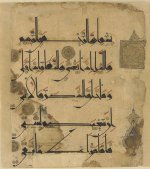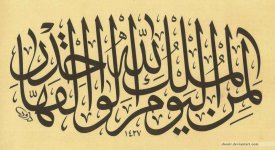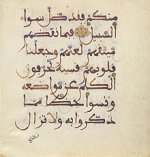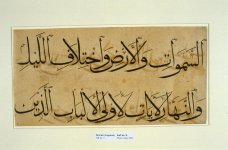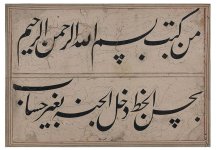noraina
* Tawakkul *
- Messages
- 2,878
- Reaction score
- 337
- Gender
- Female
- Religion
- Islam
Assalamu alaykum,
I have been meaning to make this thread for a while now, I've been studying and learning Arabic for three years and whilst I am *very* far from mastering the art, I feel I have gained enough experience from the million mistakes I've made to be able to say something on the subject.
Arabic calligraphy is very closely tied with the Quran, it developed into the stunning art form it is today directly because of the Qur'an and the spread of Islam and the Arabic language across what is now the Muslim world. It was transformed into an individual art form partly because of the prohibition on drawing living beings or faces, and partly because Muslims wished to express in a small way the inherent beauty they found in Islam and the words of Allah swt, and from this a variety of beautiful scripts flourished to express exactly that. I'm sure anyone can testify to the fact there are few forms of writing more beautiful.
Traditionally, a student learns by taqlid. They will repeatedly copy again and again their teacher's way of writing Arabic calligraphy until they have mastered the art enough to develop their own formations or pieces. This requires a huge amount of time and even more patience, and perhaps this is why not as many people actually practise calligraphy today.
There are several different styles, actually dozens of them, but the central ones are these:
The Kufic (and oldest) script:

The Thuluth (and by far most common) script, it is a subvariant of the Naskh style of script:

The Maghrebi script:

I have been meaning to make this thread for a while now, I've been studying and learning Arabic for three years and whilst I am *very* far from mastering the art, I feel I have gained enough experience from the million mistakes I've made to be able to say something on the subject.
Arabic calligraphy is very closely tied with the Quran, it developed into the stunning art form it is today directly because of the Qur'an and the spread of Islam and the Arabic language across what is now the Muslim world. It was transformed into an individual art form partly because of the prohibition on drawing living beings or faces, and partly because Muslims wished to express in a small way the inherent beauty they found in Islam and the words of Allah swt, and from this a variety of beautiful scripts flourished to express exactly that. I'm sure anyone can testify to the fact there are few forms of writing more beautiful.
Traditionally, a student learns by taqlid. They will repeatedly copy again and again their teacher's way of writing Arabic calligraphy until they have mastered the art enough to develop their own formations or pieces. This requires a huge amount of time and even more patience, and perhaps this is why not as many people actually practise calligraphy today.
There are several different styles, actually dozens of them, but the central ones are these:
The Kufic (and oldest) script:
The Thuluth (and by far most common) script, it is a subvariant of the Naskh style of script:
The Maghrebi script:

